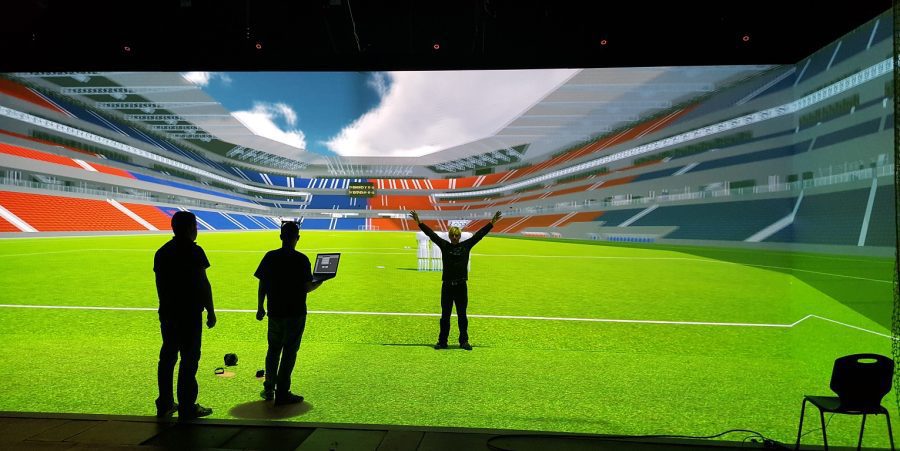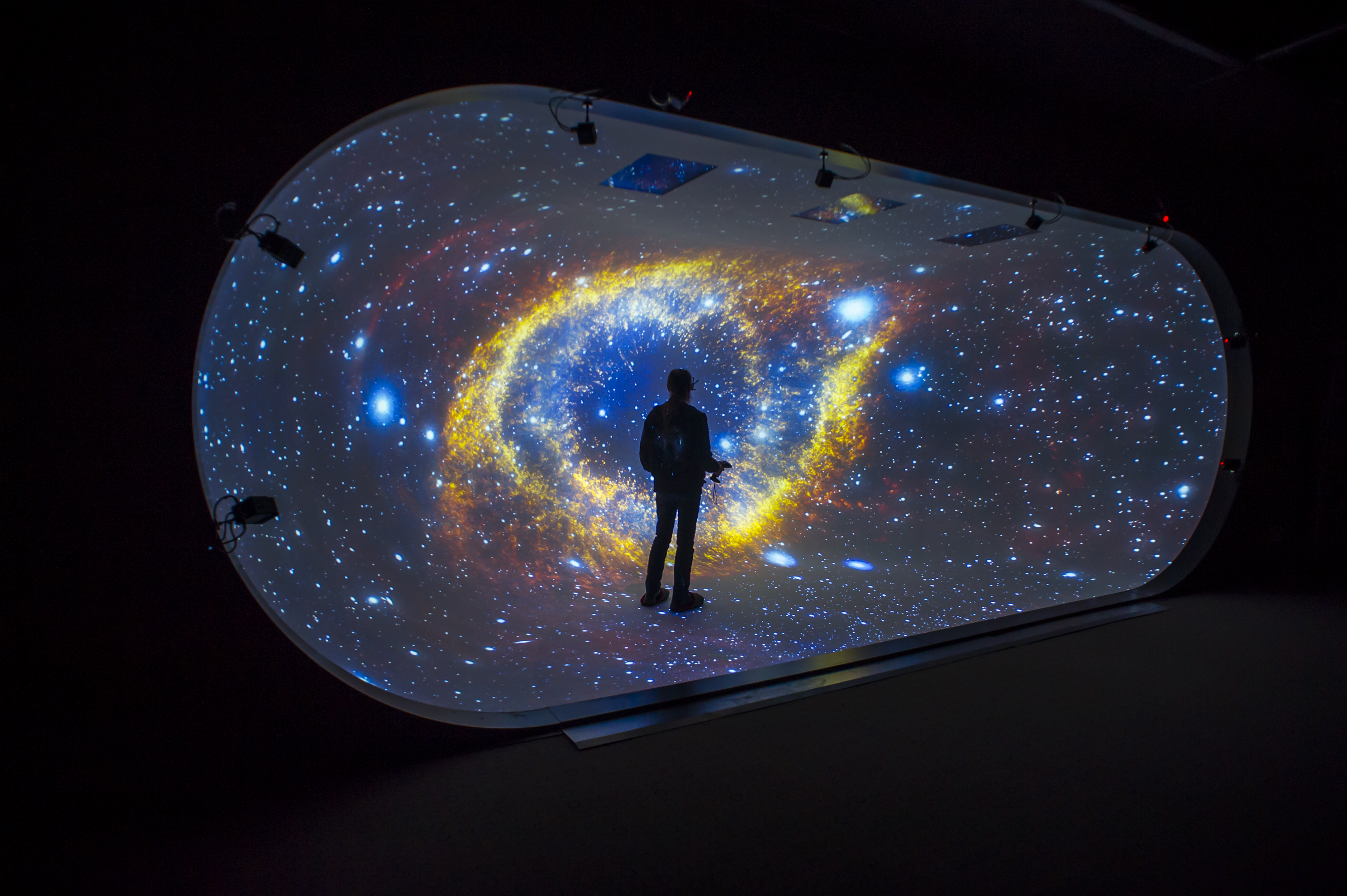Why use virtual reality in higher education?
Virtual reality can change how people learn. It also represents a significant evolutionary step forward, transforming the delivery of educational content. There are various applications for immersive virtual reality, including virtual field trips to distant or inaccessible places, content creation for any subject or theme or as a training tool to study complex material through practical tasks. It is also a valuable research aid. Antycip's goal is to bring the latest technology to our customers so they can simulate and model real-world environments, enabling university departments to use scenarios to better plan, design, review and manage research and development. Our integrated solutions have created virtual reality theatres, immersive rooms, VR CAVEs and leading-edge VR installations to assist clients in gaining greater understanding through shared visualisation.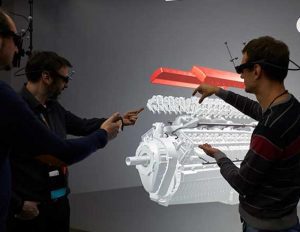
Image: Courtesy of Digital Projection
What is the impact of virtual reality on higher education?
Virtual reality in higher education encourages more autonomy, giving individuals space for self-motivated learning. Some universities are exploring the technology’s potential in other ways, investing in new research and degree programmes to delve into the virtual world and allocating resources to encourage students to become innovators. Institutions that bring VR experiences to their campus are witnessing breakthroughs that translate from a virtual scenario to the real one. In addition to creating a safer environment in which to experiment, virtual reality tools provide students with insight into dimensions that might otherwise be impossible to survey without expensive equipment and extensive training.What are the benefits of using virtual reality as a tool for learning, training or research?
Virtual reality continues to establish itself as a formidable asset in an education setting. Its success is built on a foundation that suggests people remember more about something through direct experience rather than reading, seeing or hearing about it. There is also some evidence that those who explore more of the virtual space form deeper cognitive associations with the content. Some of the key benefits of using virtual reality in this way include:1- Visualisation
A VR CAVE allows users to visualise in three dimensions environments from the past, inaccessible locations, historic representations, archaeological findings or to create futuristic scenarios. The main subject areas using VR as a visualisation tool initially were science and history. However it has been applied since to archaeology, geography, literature, industry, architecture, arts and design.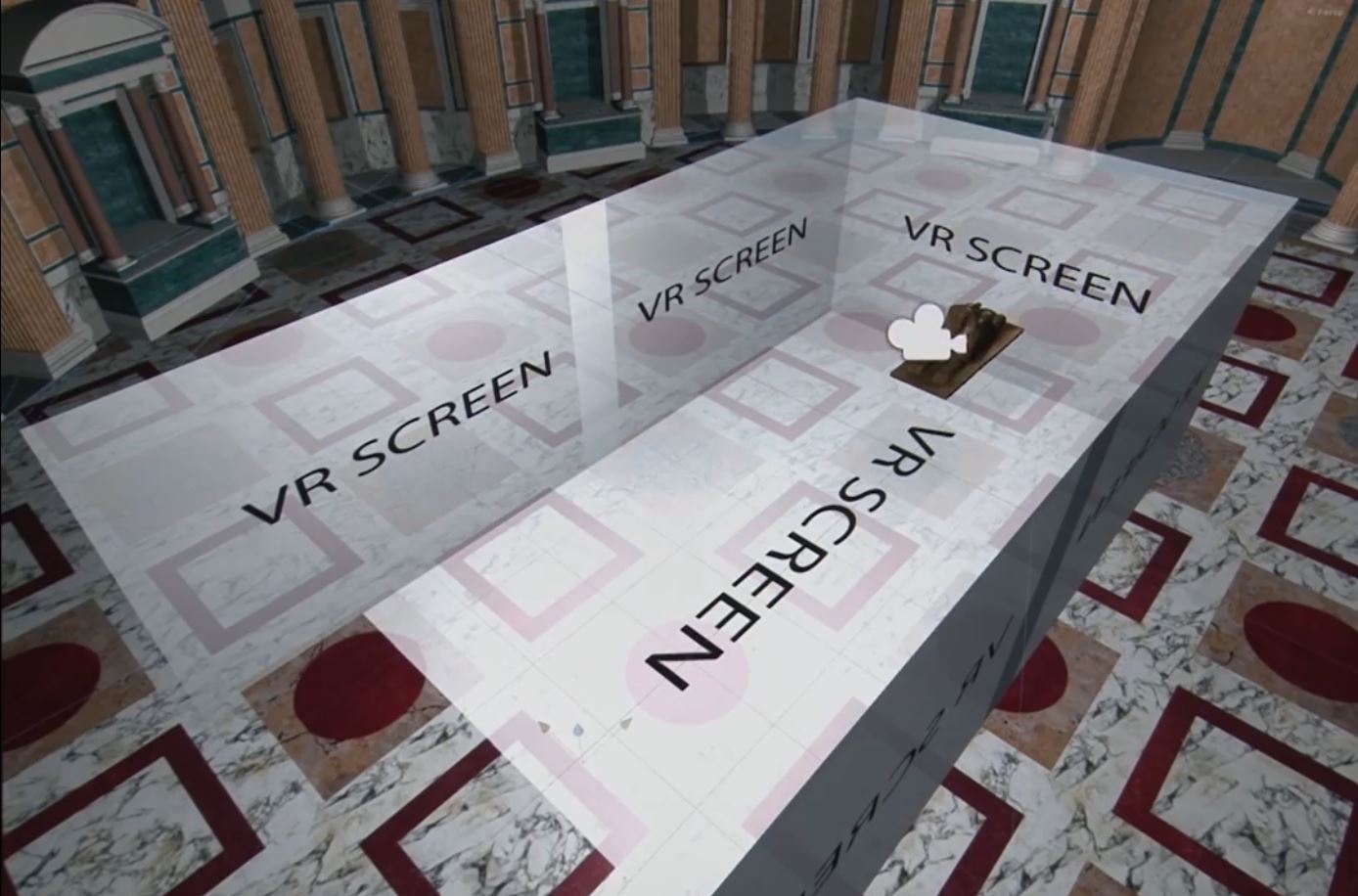
2- Access to technology
Les Arts et Métiers school in France, which trains engineers in the fields of industry, research, and socio-economics, opened a virtual immersion room installed at the Image Institute in Chalon-sur-Saône. The system is equipped with a multiple field of view, allowing two users to work collaboratively and simultaneously. It is being used for four main areas of research: industry of the future, driving simulation, virtual environments for education and health, and industrial prototyping (see below).3- Prototyping
Although virtual prototyping is commonly used by all the leading car manufacturers, VR takes this approach to the next level. It helps both designing and engineering teams better model prototypes in terms of both volume and size, and get a more detailed view of how all vehicle parts are connected. The VR room at the Image Institute hosts studies on Renault’s collaborative engineering use cases.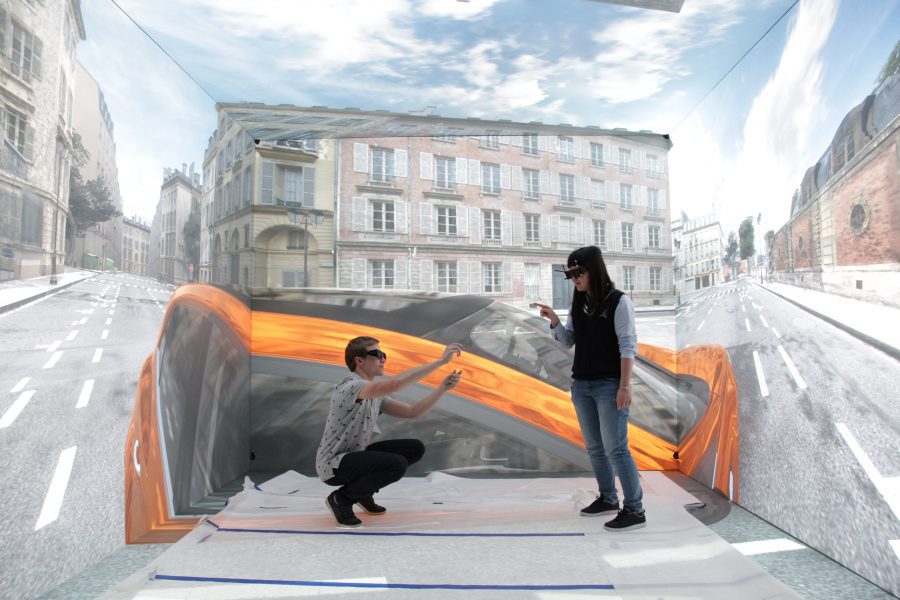
4- Experimentation
By interacting in real time with the 3D Digital world, VR offers new experimentation perspectives in life-like and controllable environments, for example, for a study of flooding. The main domains using the technology for that purpose are the health industry, psychology, sociology and sports departments.5- Training
It makes it easier for students to learn by repetition in a safe environment without any physical risk. Honing skills without a fear of failure can build confidence in learners, positioning virtual reality as the best tool for training. Domains using VR for training include education, language studies, and IT.How schools use immersive VR as an assistive technology
Not all students have equal learning abilities, and schools face challenges in accommodating different standards. They have a duty to attend the needs of every individual, but making the curriculum flexible enough is difficult. However, due to the ability of virtual reality to create one-off, unique learning solutions, it is positioned perfectly to aid learning in schools. Virtual environments can give students the space and opportunities they need to develop essential skills. It offers sensory-based experiences, and provides a therapy that reduces anxiety. Immersive virtual reality also removes distractions for students with attention deficit disorder. It provides freedom to explore in a safe, controlled environment.How VR can revolutionise education in schools and universities
The division between the classroom and the world outside is blurring through the use of innovative virtual reality applications. The use of VR in research, for example, creates virtual laboratory environments, where students can experience immersive STEM (science, technology, engineering and mathematics) learning. This helps increase access to students and makes the whole learning process more affordable. In different fields of study the classroom can transform itself to meet different, requirements, providing immersive learning environments. And with virtual reality spaces provided by VR CAVE technology, learning can be at either an individual or group level, without the discomfort of wearing a headset.What are the applications of VR in education?
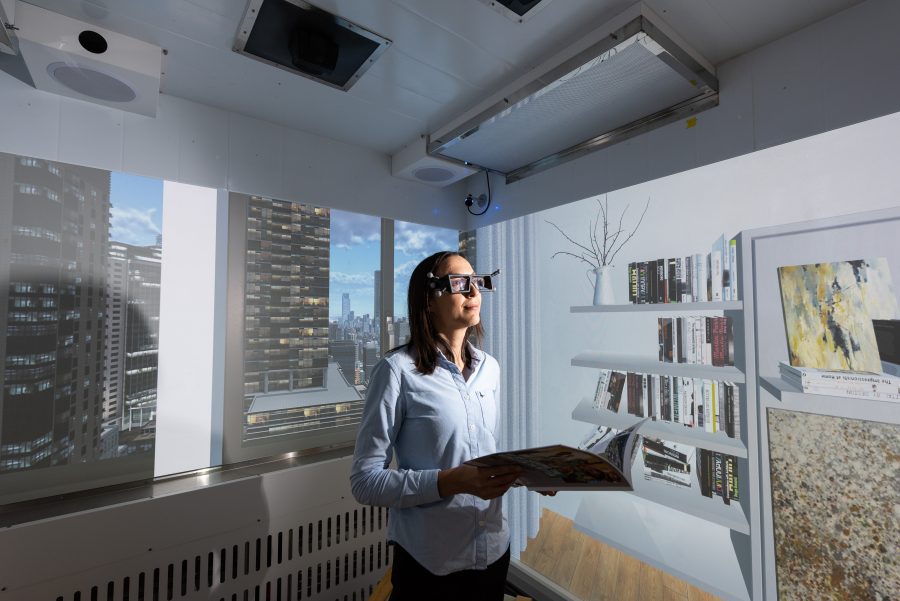 The University of Bath has installed a VR CAVE consisting of an environmental chamber on a moving hydraulic platform. This is used mainly as an immersive research tool, studying people’s reactions to different, lifelike environments. However, research teams at the university are continuing to identify numerous additional applications including driverless vehicle design and physical rehabilitation.
The Ecole Normale Superieure de Rennes (ENS Rennes), a prestigious public institution of higher education and research, is home to a three-sided VR CAVE. It is being used to study sports team communication and interaction on the field, and from there assisting them with training to improve at both. The technology makes it possible to introduce a virtual opponent to an athlete, encouraging better understanding of how a goalkeeper might react to a shot at goal in soccer or how a rugby player responds to the arrival of an opponent.
The University of Bath has installed a VR CAVE consisting of an environmental chamber on a moving hydraulic platform. This is used mainly as an immersive research tool, studying people’s reactions to different, lifelike environments. However, research teams at the university are continuing to identify numerous additional applications including driverless vehicle design and physical rehabilitation.
The Ecole Normale Superieure de Rennes (ENS Rennes), a prestigious public institution of higher education and research, is home to a three-sided VR CAVE. It is being used to study sports team communication and interaction on the field, and from there assisting them with training to improve at both. The technology makes it possible to introduce a virtual opponent to an athlete, encouraging better understanding of how a goalkeeper might react to a shot at goal in soccer or how a rugby player responds to the arrival of an opponent.
